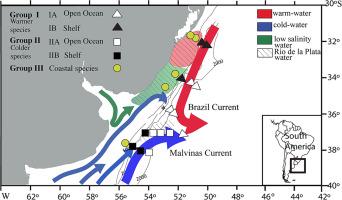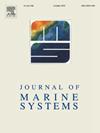Distribution, abundance, and reproductive stages of salps, doliolids, and chaetognaths in different water masses of the shelf and open ocean of the Southwestern Atlantic Ocean between 31° and 38° S
Abstract
The complex distribution of gelatinous zooplankton at the shelf and open ocean of the Southwestern Atlantic Ocean (31°-38°S) was closely linked to the prevailing water masses. Species composition differed significantly between subtropical and subantarctic assemblages in both neritic and oceanic environments. Diversity was lower in neritic and Malvinas assemblages but higher to the north of the Brazil-Malvinas Confluence. The influence of the Brazil Current was evident through the dominance of warm-water species such as Flaccisagitta enflata, Fl. hexaptera, Pterosagitta draco, Pseudosagitta lyra, and Salpa fusiformis, which displayed the highest abundances and different maturity stages north of the Confluence. The cold-waters originating from subantarctic regions were indicated by the presence of Ps. gazellae, Eukrhonia hamata, and Serratosagitta tasmanica, which showed higher abundances and the co-occurrence of different maturity stages south of the Confluence. The spread of low-salinity water into oceanic stations was indicated by the presence of species such as Parasagitta friderici and Pa. tenuis, which are typically found in neritic waters with low salinity. The coexistence of typical species from both warm- and cold-waters at oceanic stations in the Confluence section reflects the complex oceanographic structure of one of the most intense open-ocean fronts in the world ocean.


 求助内容:
求助内容: 应助结果提醒方式:
应助结果提醒方式:


